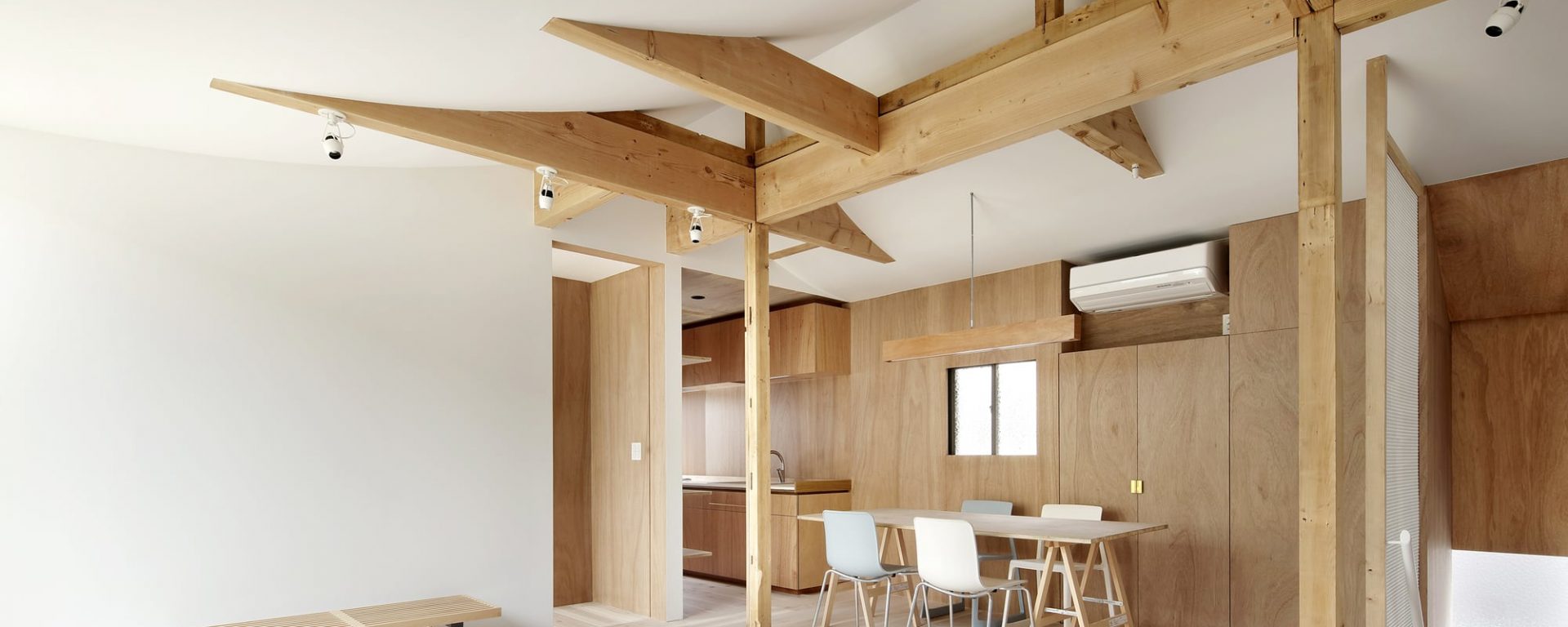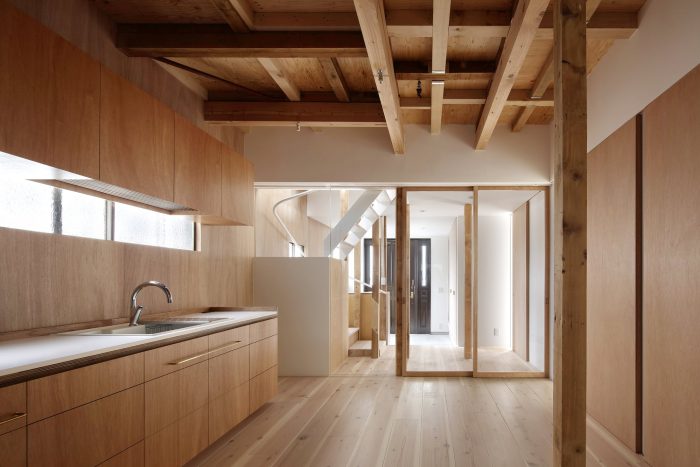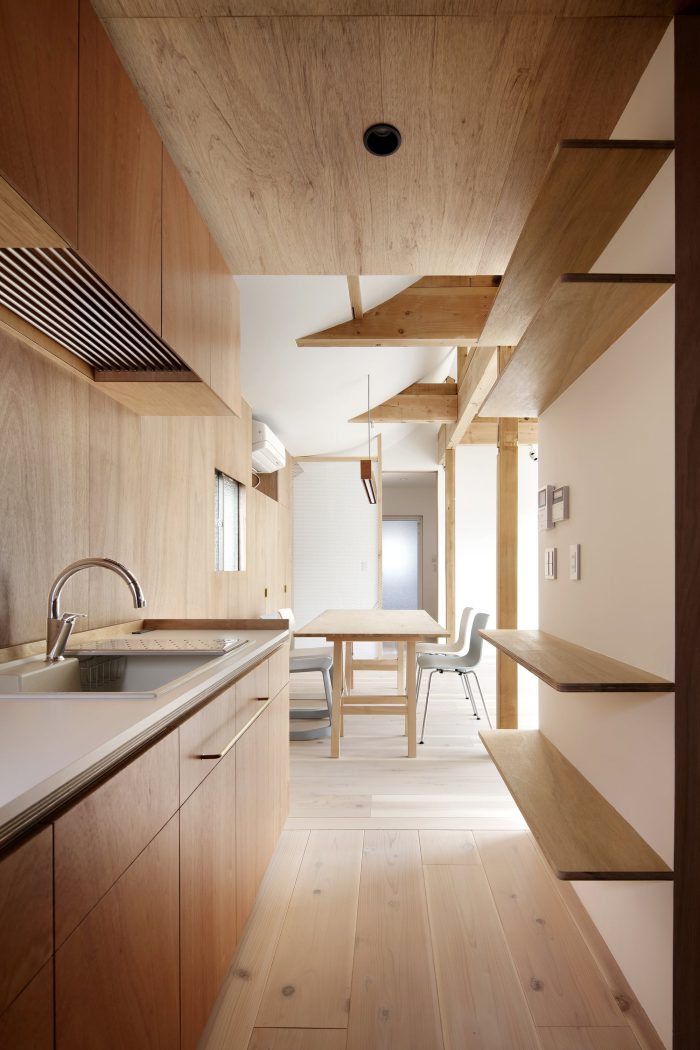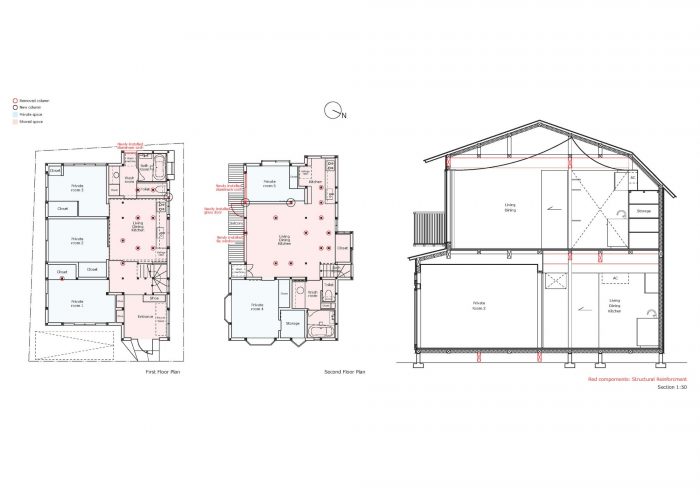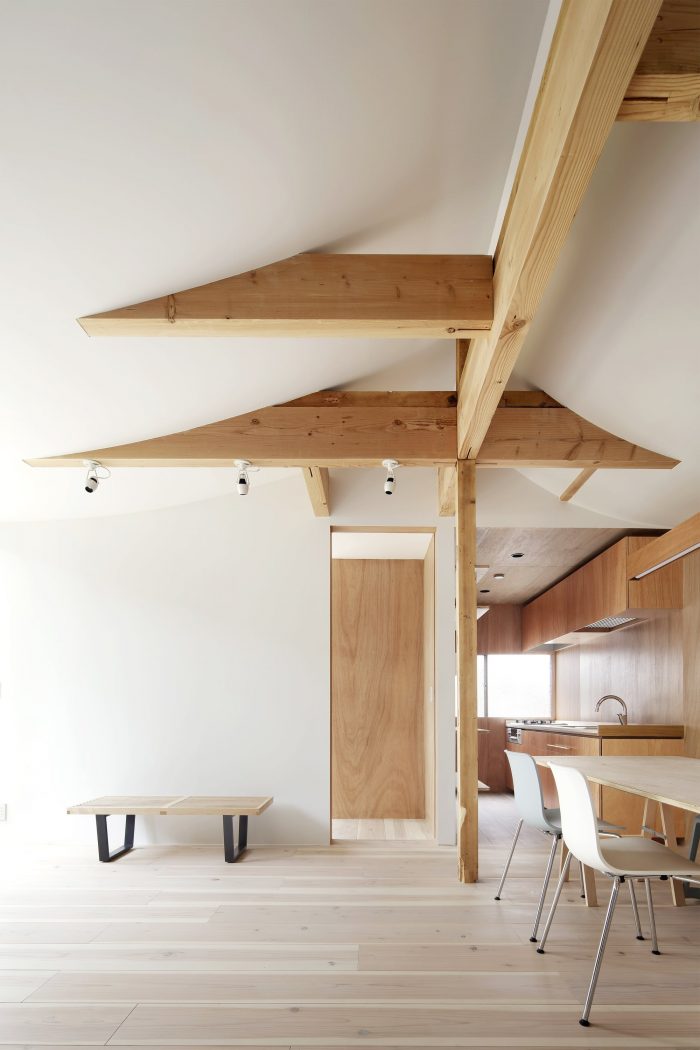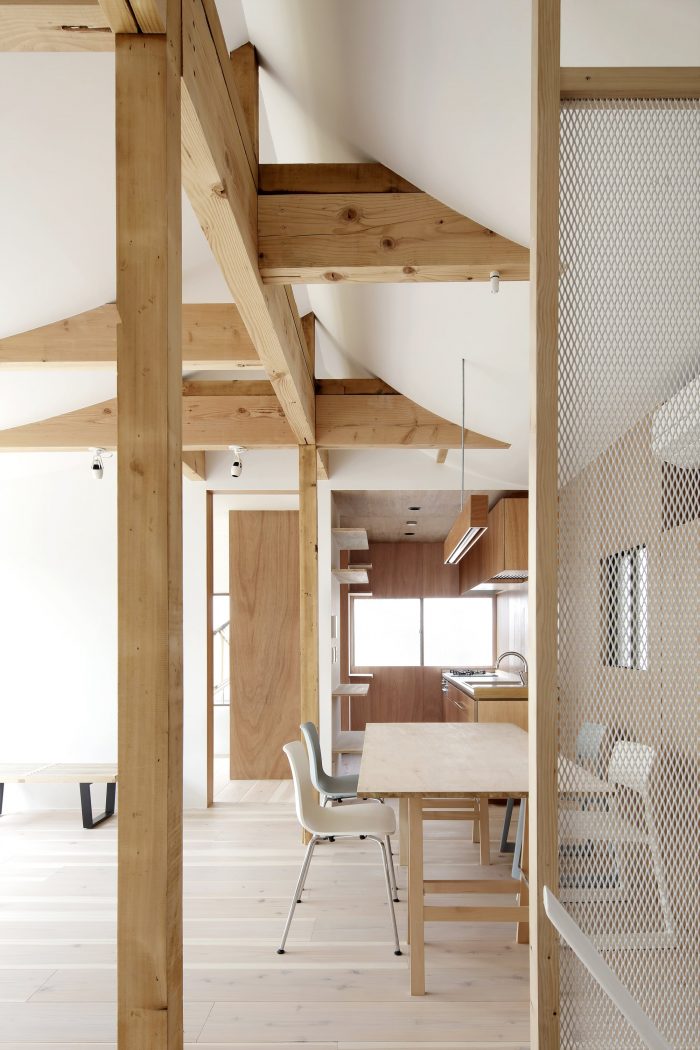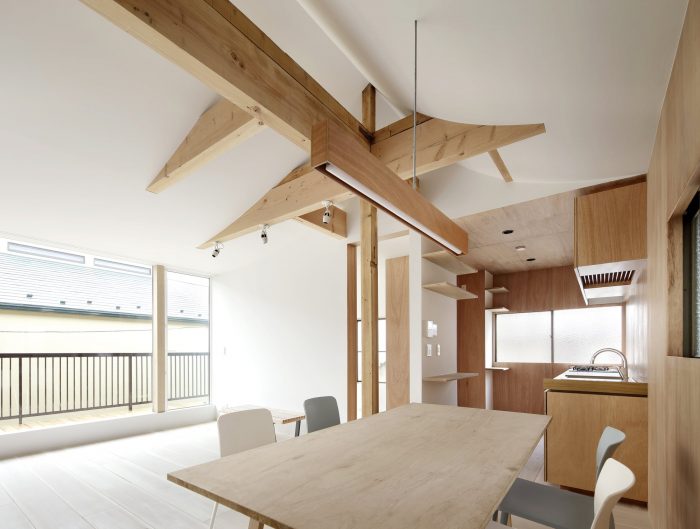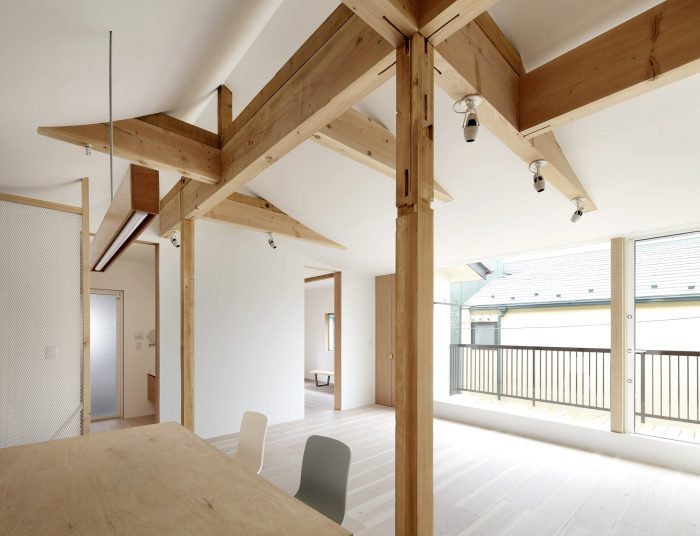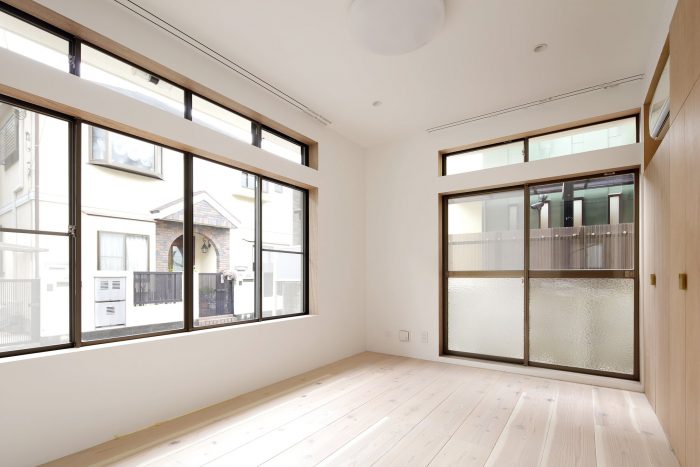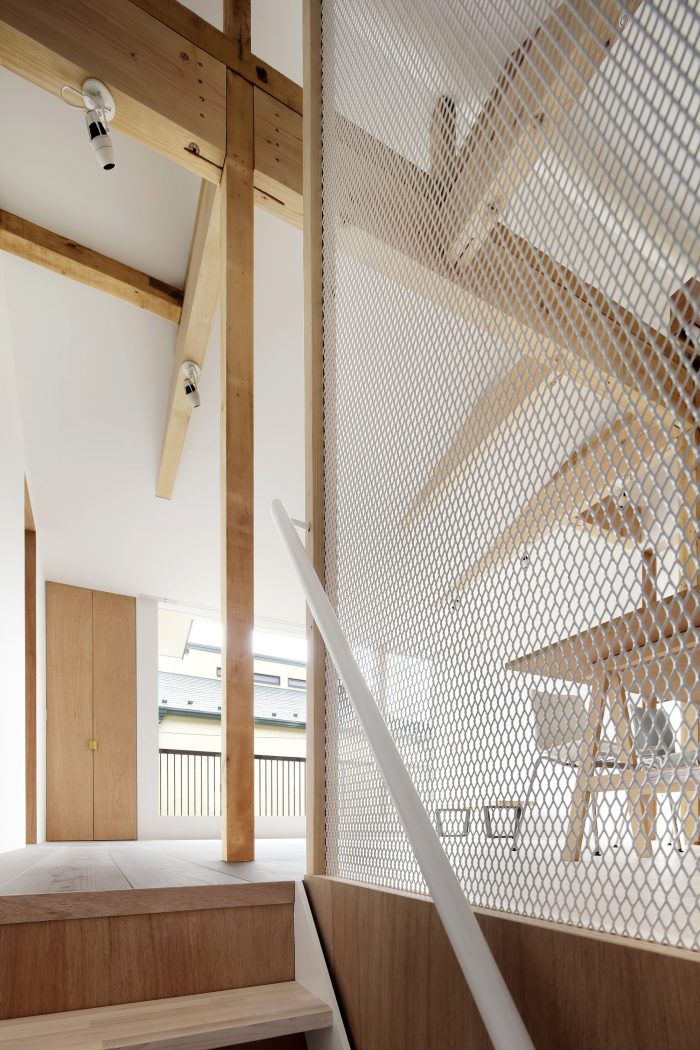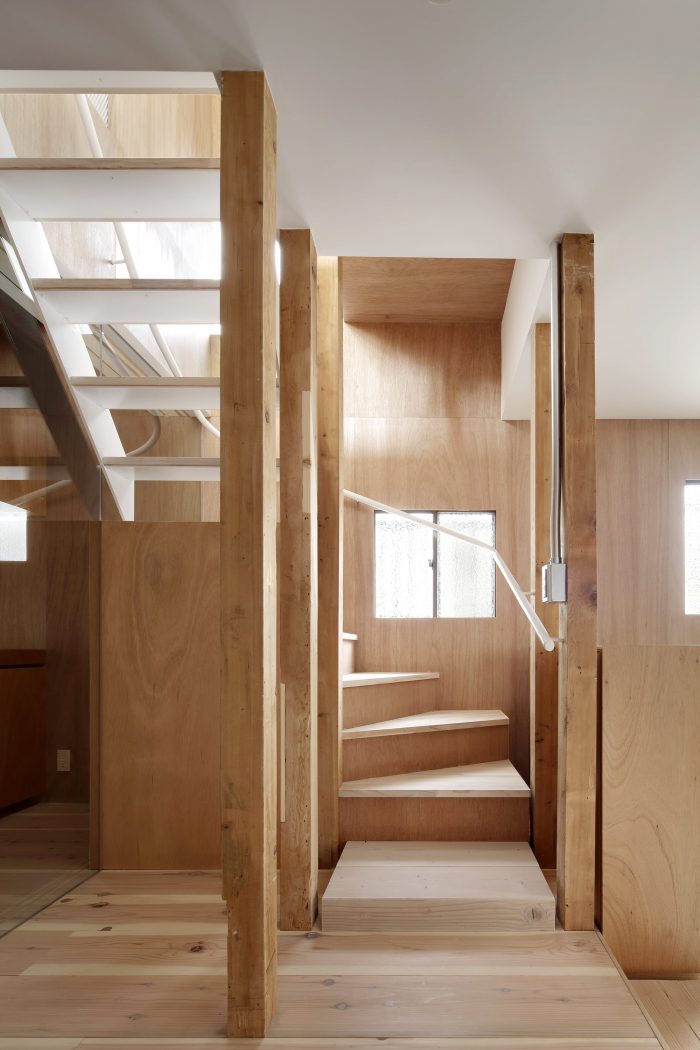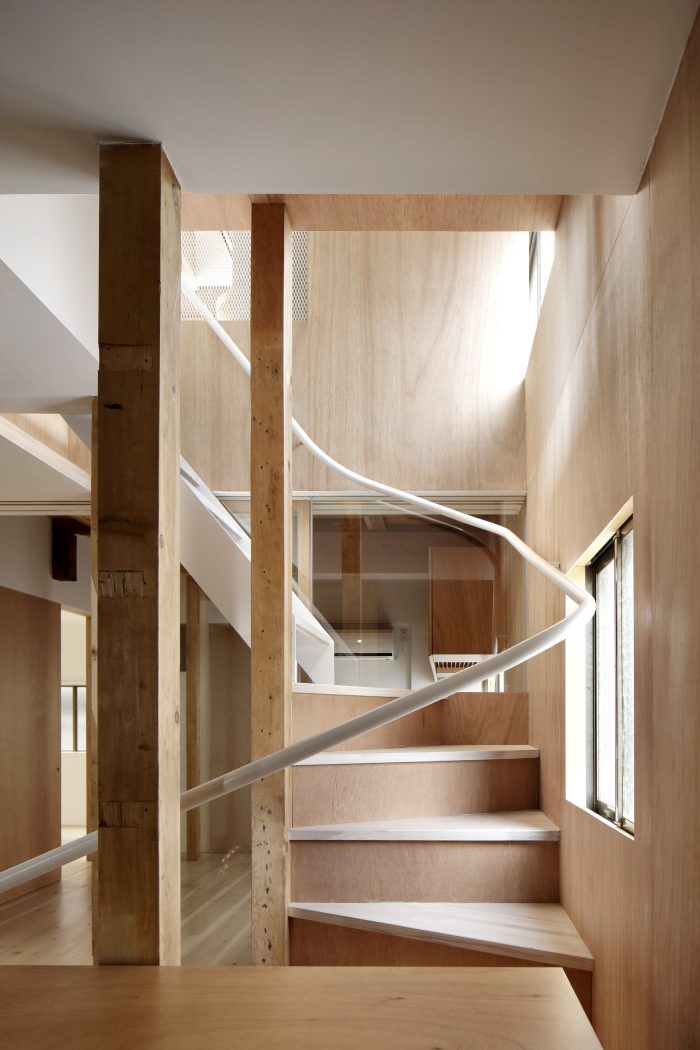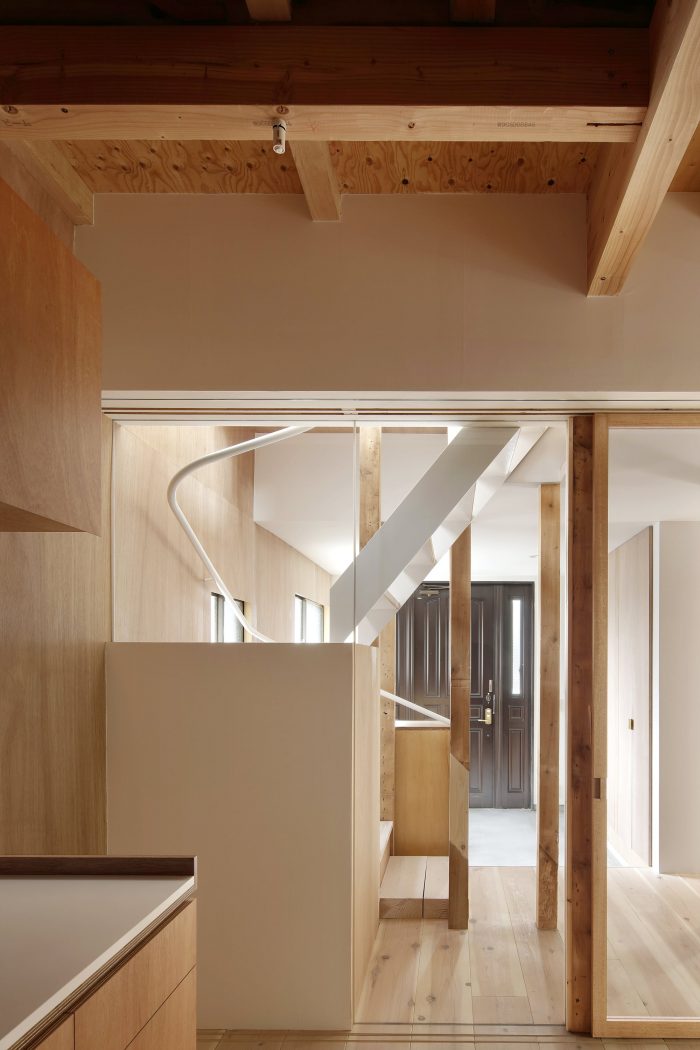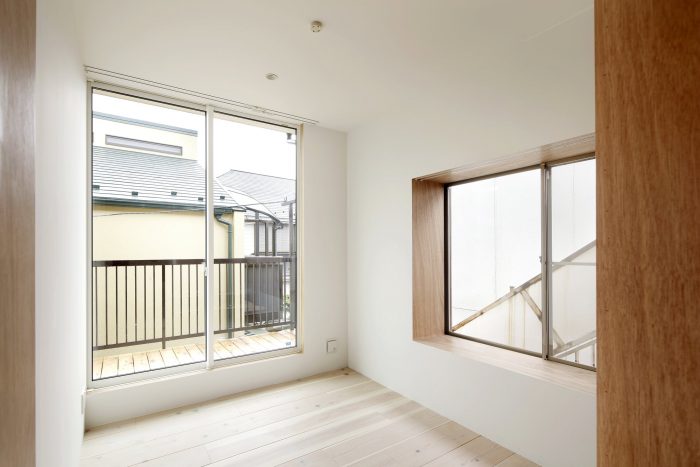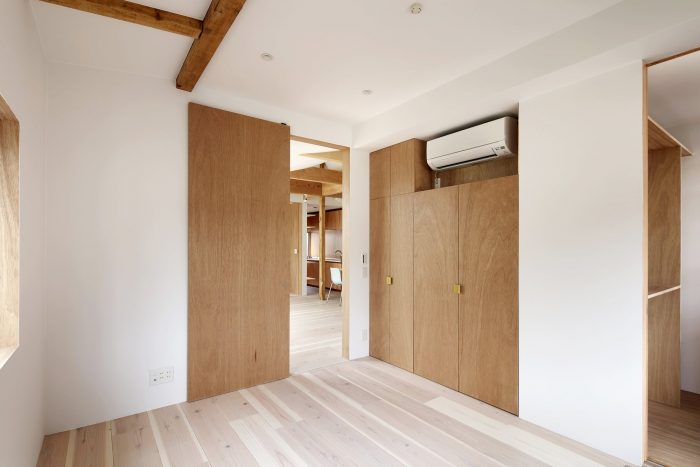这是一个位于东京的现有两层木结构房屋的室内装修项目,建于大约40年前。客户是一对年轻夫妇,妻子的父母在装修前住在那里。客户决定与他们的父母住在这所房子里。不久之后,妻子的祖母独自住在乡下–远离东京–也决定一起住在这所房子里。因此,客户要求把房子装修成适合四代人居住的样子–祖母(第一代)、父母(第二代)、客户(第三代)、客户的儿子(第四代)。
This is an interior renovation project of an existing two-story timber structure house in Tokyo built approximately 40 years ago. The client is a young couple, and the wife’s parents were living there before the renovation. The client decided to live with their parents in this house. Soon after, the wife’s grandmother who lives alone in the countryside – far from Tokyo – also decided to live together in this house. As such, the client requested to renovate the house suitable for accommodating 4 generations – the grandmother (1st generation), parents (2nd generation), the client (3rd generation), the client’s son (4th generation).
虽然每个家庭成员的日常行为模式不同,但创造一个空间来促进生活在一个屋檐下的所有世代之间的联系成为一个主要的焦点。
While the daily behavior patterns of the each family member is different, creating a space to promote connection between all generations living under one roof became a major focus.
此外,我们发现现有的房间被分割成较小的功能区,因此,它们既不向外部环境开放,也不相互开放,导致日照和自然通风不足。考虑到这些问题,我们决定改善空间的质量、采光和通风也是改造的关键。
Moreover, we found the existing rooms were split into smaller functions and as such, they were not open to the outside environment nor to each other, leading to poor daylight and natural ventilation. Having these issues in mind, we decided that improving the quality of the space, daylighting and ventilation were also essential to the renovation.
首先,我们仔细研究了私人房间的安排,以充分利用现有的窗户,从而使自然采光和通风最大化。其余的空间被指定为 “共享空间”;向所有家庭成员开放的空间,并在每个楼层规划了公用设施。私人房间也可以在成员之间交换,以加强几代人之间的交流;类似于共享屋的生活方式。共享空间的 “共享 “性质通过与外部的联系而得到有意识的加强,例如将入口空间与 “共享空间 “直接相连,并在 “共享空间 “安装一个大窗户。
同时,我们也审查了现有的结构。尽管柱子是按照现有的隔断密集排列的,但我们发现,现有的房子在结构上是不平衡的,缺乏必要的结构阻力。因此,我们决定通过支撑梁和结构胶合板增加加固,同时优化使用其现有的结构部件。
Firstly, we carefully studied the arrangement of the private rooms to take full advantage of existing windows thus maximizing natural daylight and ventilation. The remaining spaces were designated as “shared space”; spaces open to all family members and planned in each floor with utilities. The private rooms are also exchangeable among the members so as to enhance communication between generations; similar to a share-house lifestyle. The nature of “share” in the shared spaces was consciously enhanced by making the connection with the outside, such as directly connecting the entrance space to the “shared space” and installing a large window in the “shared space”.
At the same time, we also reviewed the existing structure. Although the columns were densely arranged in accordance with the existing partitions, we found that the existing house was structurally unbalanced and lacked the necessary structural resistance. As such, we decided to add reinforcements through supporting beams and structural plywood whilst optimizing the use of its existing structural components.
作为这些研究的结果,一些柱子被认为是多余的,因此可以拆除(总共拆除了20根柱子),提供了一个创造无柱开放空间的机会。
As a result of such studies, some columns were deemed redundant and thus removable (total 20 columns were removed), providing an opportunity to create open spaces free of columns.
二楼共享空间的天花板是猫形的–加强了与外部的自然联系,并最大限度地将自然光扩散到空间。梯形的天花板轻轻地笼罩着所有4代家庭,他们最终享受到生活在一个充满自然采光和通风的空间。
The ceiling of the shared space on the second floor is catenary shaped – enhancing a natural connection to the outside and maximizing the diffusion of the natural lighting into the space. The catenary-shaped ceiling gently envelopes all 4 generations of families who ultimately enjoy living in a space abundant of natural lighting and ventilation.
Architects: tomomi kito architect & associates
Area : 140 m²
Year : 2017
Photographs :Satoshi Shigeta
Lead Architects : Tomomi Kito
Structural Designer : Building Structure Institute
Technical Advisor : Yutaka Misawa
Lighting Advisor : Kanae Hagiwara
Technical Advisor : Yutaka Misawa
Lighting Advisor : Kanae Hagiwara
Country : Japan

